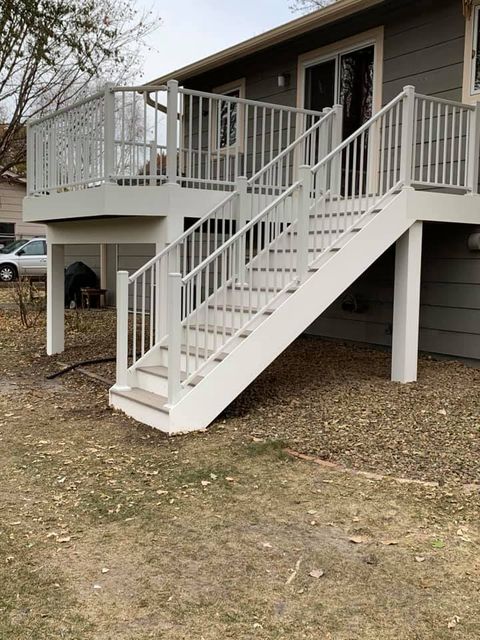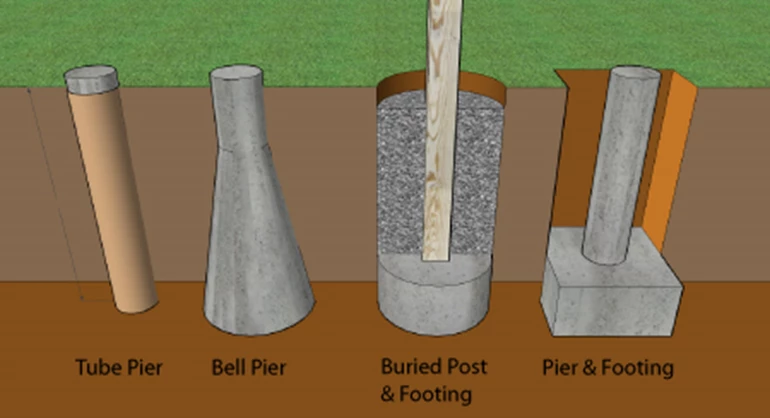Guarantee Security and Durability With Properly Set Up Deck Footings
Deck footings might not be the most extravagant element of deck building, however they play an important role in guaranteeing stability and long life. In this conversation, we will certainly explore the importance of proper deck grounds, aspects to think about during installation, various kinds of footings readily available, detailed setup guide, and upkeep suggestions for ensuring durable grounds.

Value of Proper Deck Grounds
Why are correctly mounted deck footings important for the stability and longevity of your deck? Deck footings are the foundation on which the deck relaxes, transferring the tons from the deck to the ground.
First of all, correctly set up deck grounds disperse the weight of the deck evenly, preventing any uneven settling or sinking. This is particularly important in locations with unsteady soil, as it helps to minimize the threat of the deck shifting or falling down. In addition, well-installed grounds make certain that the deck remains level, preventing any type of structural damages that can happen when a deck comes to be irregular.
Secondly, properly set up grounds provide a solid support for the deck, avoiding excessive activity and guide. This aids to keep the architectural stability of the deck, minimizing the risk of injuries or mishaps. It likewise lessens the damage on the deck, permitting it to hold up against the elements and normal usage for a longer time period.
Variables to Take Into Consideration for Deck Ground Installment
When setting up deck grounds, there are several essential elements to take into consideration for appropriate setup. Various dirt types have different load-bearing capabilities, so it is important to conduct a dirt test to make sure the grounds can sustain the weight of the deck and its passengers. By taking into account these factors, you can make certain the proper installment of deck grounds and appreciate a steady and durable deck.
Types of Deck Footings to Pick From
There are a number of different kinds of deck footings offered for you to choose from. Each type has its very own benefits and drawbacks, so it's vital to consider your details needs and the conditions of your deck prior to deciding.
One typical kind of deck footing is the concrete footing. This includes excavating openings in the ground and putting concrete right into them to produce a solid structure. Concrete footings are long lasting and supply excellent stability, making them suitable for decks in locations with difficult soil problems or high wind tons.
Another alternative is the helical pier footing, which includes a steel shaft with helical plates that are screwed into the ground. These grounds are quick to set up and can be utilized in different soil types, consisting of sandy or clay dirts. They are likewise flexible, enabling for simple leveling of the deck.
Sonotube footings are one more popular selection. These grounds are developed by positioning a cardboard tube in a hole and filling it with concrete. Sonotube footings are reasonably very easy to mount and give sufficient security for smaller sized decks or in locations with less demanding dirt problems.

When choosing the type of deck footing, it's critical to consider aspects such as soil problems, deck dimension and weight, neighborhood building ordinance, and individual preferences. By selecting the suitable ground type, you can make sure the security and longevity of your deck.
Step-by-Step Guide for Installing Deck Footings
Identify the location: Begin by noting the exact setting of each footing using stakes and string (Deck Footings). Consider any regional building ordinance or guidelines concerning setback ranges
Dig the holes: Utilize a blog post opening digger or an auger to dig the openings for the grounds. Normally, a depth of at least 36 inches is recommended for stability.
Degree the openings: Guarantee that all-time lows of the holes are level (Deck Footings). This can be achieved by utilizing a level or a straight board throughout the top of the openings
Include crushed rock: Area a layer of gravel at the bottom of each hole to enhance drain and prevent the ground from penetrating the dirt gradually.
Put the footing forms: Put the ground develops into the holes, ensuring they are focused and level. Use risks to protect them in position.
Mix and put concrete: Follow the instructions on the concrete mix bag to prepare the concrete. Put the concrete into the footing forms, filling them completely.
Smooth the surface area: Make use of a trowel to smooth the surface of the concrete and eliminate any kind of air pockets. Allow the concrete to heal according to the maker's More Info instructions.
Maintenance Tips for Long-lasting Deck Grounds
Correct maintenance is essential for ensuring the durability and security of deck grounds. By consistently examining and keeping your deck grounds, you can prevent damage and prospective safety dangers.
Normal cleaning is additionally vital for keeping deck footings. Dirt, particles, and plant life can gather around the footings, which can cause moisture accumulation and degeneration. Cleaning the footings consistently, utilizing a pressure or a brush washer, can help Get More Information protect against these problems and extend the life expectancy of your deck.
In enhancement to cleansing, it is crucial to keep the location around the grounds clear of any kind of blockages. Stay clear of piling things versus the grounds or enabling plants to expand as well near to them. These obstructions can catch wetness and cause the footings to deteriorate in time.
Finally, routine resealing of the grounds is recommended to shield them from dampness and other ecological factors. Using a waterproof sealer can aid prevent water damage and prolong the life-span of the footings.
Final Thought
Finally, appropriate installment of deck footings is vital for making sure stability and longevity of your deck. Factors such as soil type, load capability, and neighborhood building ordinance require to be taken into consideration when picking the right kind of deck grounds. Following a detailed overview for installment and regular upkeep will help to guarantee the footings stay resilient and sturdy.
In this discussion, we will explore the relevance of appropriate deck grounds, aspects to think about throughout installment, various kinds of footings readily available, detailed installment guide, and upkeep tips for guaranteeing durable footings. Deck footings are the foundation on which the deck rests, transferring the lots from the deck to the ground.One common kind of deck footing is the concrete footing. Put the footing types: Put the ground develops into the holes, ensuring they are centered and degree.In verdict, correct installation of deck footings is critical for ensuring check my site stability and longevity of your deck.